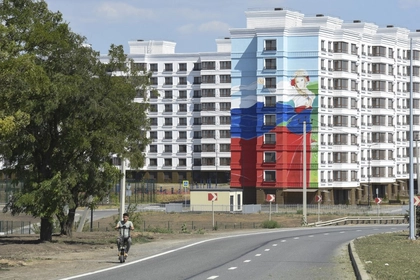I wrote the attached piece late last year with my colleague, Polina Kurdyavko, trying to think through innovative solutions for Ukraine around its debt issue when the war ends and the focus turns to reconstruction. It seems that key bottlenecks with SDR reallocation are actually in the UK and the US - stuck with our respective Treasuries. We tried to push for effort herein in Congress, and tried to get the attached piece published by the mainstream media/broadsheets, but to no avail at the time.
Since then the FT published something by Martin Wolf focusing on Lee Buchheit’s pitch around a Brady plan - which was the basis of our own idea. I actually broached the issue back in June, prior to the debt standstill that was agreed later in the summer - obviously my ideas back then fell on deaf ears.
JOIN US ON TELEGRAM
Follow our coverage of the war on the @Kyivpost_official.
Anyway, read through the latter and feedback is appreciated. If anyone in the mainstream media want to reprint, let me know.
SDR reallocation proposal
Executive summary:
Following the Russian invasion of Ukraine, COVID-19 pandemic and rise of global interest rates, the funding requirements for reconstruction as well as the need to access liquidity to facilitate the growth needs of Ukraine and a number of other impoverished Emerging Market countries have grown exponentially.

This paper proposes that in conjunction with the traditional debt restructuring route, these countries also gain access to new funding involving both private and public sector participation, collateralised by the IMF Special Drawing Rights.

IMF Approves $1.1 Billion Loan Disbursement to Ukraine Before Trump Inauguration
This proposal would leverage a portion of the IMF’s SDR facility, already committed for reallocation, to be used as collateral for a new "Brady Bond" style vehicle that would include private sector participation. It would aim to proactively address the pressing funding needs of qualifying low and middle income debtor nations (referred to as "Frontier" countries for the purposes of this paper) but remain conditional on the delivery of predetermined KPIs linked to Sustainable Development Goals (SDGs).
We believe this plan could fulfil the strategic imperatives of major stakeholders -- including the United States, the International Monetary Fund, international investors and a number of Emerging Market Countries – in rebuilding economies, boosting growth and attaining a sustainable debt profile while also meeting local humanitarian and environmental imperatives.
The benefits of supporting this approach include:
* Provides urgently needed debt relief for Ukraine and some of the most impoverished countries in the world;
* Encourages the private sector to provide significant new funding for Ukraine’s reconstruction, and for investment in Frontier countries in the form of internationally traded debt at more affordable levels than they could access through the traditional Eurobond market;
* Ensures delivery on SDG objectives in Ukraine and Frontier countries through careful criteria and conditionality around KPIs;
* Once the debt is repaid, the collateral would be returned and recycled, enabling these solutions to have ongoing, longer-term benefits;
* Underscores the commitment of the United States in supporting economic development and prosperity in areas including the Global South and Ukraine, in an environment in which liberal democratic values and systems are currently under threat.
* Provides an innovative public private partnership solution which involves little additional cost to US taxpayers.
Geopolitical and economic backdrop
The Russian invasion of Ukraine has brought into focus the significant damage to the Ukrainian economy, as well as a multitude of knock-on effects to the global economy. While the United States and allies have provided military and financial support in the war effort, it is evident that Ukraine will emerge from this conflict with an unsustainable debt burden, likely over 100% of GDP, and significant reconstruction and recovery costs – potentially as high as $1trillion.
At the same time, tighter global liquidity, the economic fallout of the COVID-19 pandemic and pressure on supply chain and commodity prices resulting from the Russia/Ukraine war create serious headwinds for a number of Frontier countries, potentially structurally impairing their ability to service their debt.
The higher cost of debt and increased volatility in core rates has translated into limited access to external funding, especially for those countries that already have substantial debt stock, many in the form of internationally traded bonds, and lack alternative funding sources.
Many of the Sub-Saharan African credits, for example, haven’t fully recovered from COVID-19, with low vaccination rates, and have witnessed 28 million people falling into extreme poverty over the last three years. A deterioration in net exports and growth dynamics adds to already large structural imbalances, with many of the economies facing weakened fiscal balances and larger balance of payments gaps that would require access to external funding.
This comes at a time when commercial funding has become increasingly prohibitive. Moreover, many of these countries have sustained the fastest growing stock of debt, with international bonds alone increasing from $5 billion in 2009 amounting to a total $100 billion in 2021.
So far, the region has received $30 billion worth of developmental assistance and $60 billion of IMF emergency funding. With existing elevated levels of indebtedness (debt-to-GDP in high double digits) and high gross financing needs, creditors are likely to require a higher level of confidence that the challenges above will be addressed before showing willingness to provide further lending.
Potential fallout of growing sovereign defaults amongst Emerging Market countries
One risk of higher rates of default is the potential of broader regional spill over impairing growth prospects and driving away investor risk appetite for this segment of the market, ultimately starving an even larger number of countries of their funding requirements. Since early 2000s, default rates in the high-yield segment of Emerging Markets hard currency sovereign debt have increased significantly from one percent to the mid-single digits. However, until recently default cases were mostly idiosyncratic and the fallout was contained to the specific countries in question.
This time around the risk of a systemic event in regions such as Sub-Saharan Africa is magnified given the conflation of numerous factors, including growth uncertainty, large outflows ($84bn of fund outflows in 2022) from the emerging markets tradeable fixed income asset class, rising cost of funding and lack of clarity regarding support measures and liquidity to restore the path to growth.
Restructuring frameworks:
The main challenge in a sovereign debt restructuring lies in creating a framework that brings direct investment and portfolio flows, as well as a policy mix that is designed to improve growth prospects going forward and put debt servicing on a sustainable path.
IMF analysis suggests that following a debt restructuring, an Emerging Market country will typically lose five percentage points of output per year and witness a 40% drop in private sector borrowing, given the reputational damage.
In order to support a quicker recovery in these economies and a chance to regain market access, we would propose a new comprehensive approach that reprofiles existing debt into a new instrument linked to key Sustainable Development Goals as KPIs, but also providing additional liquidity through an ESG-linked ‘new money’ solution that could be tightly monitored and linked to specific, strategically important projects.
Such a framework, with attached conditionality and tighter monitoring, could be a win-win for both investors and countries in need.
Moreover, this new collateralised instrument could go a long way in addressing investor concerns surrounding transparency or potential corruption through the use of documentation that includes specific covenants related to transparency metrics and use of proceeds, as well as other deliverables and KPIs.
Use of IMF Special Drawing Rights
The proposed initiative dovetails well with the IMF decision in August 2021 to issue $650bn in new SDRs globally to provide economies, particularly poorer lower income countries, more fiscal space to tackle the challenges resulting from the COVID-19 pandemic.
In October 2021 the G20 countries pledged to reallocate 20% of their SDR allocations, or about $100bn, to lower and middle-income countries (L&MICs). As SDRs are reserve assets, their reallocation involves no additional fiscal cost to the donor nations. Yet for relatively small economies these allocations have the potential to have a significant positive impact.
As of writing only just under $60bn of the total of $100bn earmarked by G20 for reallocation has been formally committed.
At present there are two IMF vehicles - the Poverty Reduction and Growth Facility (PRGF) and Resilience and Sustainability Trust (RST) - available to facilitate the actual SDR reallocation with IMF oversight.
We propose creating a third vehicle, a Brady bond style collateralised restructuring facility, as detailed above, in order to create meaningful positive multiplier effects for qualifying countries.
The plan could be further extended if other G20 economies follow the French lead and step up SDR allocations to 30% of their allocated quotas. Indeed, this would provide an additional $50bn in financing for further incentive for much more generous debt relief to Frontier countries.
US Congressional action
As of writing the US Congress has yet to sign off on the G20 pledge to reallocate 20% of the US new SDR allocation, amounting to a sum of around $22bn. Raising this to the 30% threshold would open up over $33bn in financing to be made available for lower and middle income countries.
We kindly request that the US Congress honours the existing G20 commitment and gives serious consideration to raising this commitment to the 30% threshold. In particular, and noting the positive multiplier effects from an SDR reallocation linked to this collateralised debt arrangement, we believe this move would go a long way in demonstrating a significant commitment to facilitating economic recovery and prosperity in the Global South.
Moreover, at a time when the US and its allies, are focusing on helping Ukraine win the war against Russia an SDR reallocation and collateralised debt solution could provide a huge step up in Ukraine’s looming effort at reconstruction and recovery. Through no fault of its own, Ukraine will emerge from the conflict with an unsustainable debt burden - likely over 100% of GDP. SDR reallocation can be used to facilitate a much more generous treatment of Ukrainian private sector debt, which could allow much earlier market access for the government and, with this, help lower borrowing costs at a critical time in the recovery process. This will also enable the private sector to share the burden with the public sector in Ukraine’s likely substantial reconstruction needs - potentially approaching $1 trillion.
Private Sector Role
The likelihood of private sector participation in this proposal, using a more comprehensive approach to funding the Ukraine and a number of Frontier countries, is based on a set of incentives. As international investors evaluate the creditworthiness of Frontier countries, their risk assessment has broadened to incorporate long-term social and environmental outcomes.
However, their willingness to provide ESG linked capital would be greatly enhanced by the backing of governments and International Organisations in the form of collateral, as well as commitments from the borrowing nations, both structural and legal, regarding transparency and use of proceeds.
Timothy Ash is a Senior Emerging Markets Sovereign Strategist at RBC BlueBay Asset Management. He is an Associate Fellow at Chatham House on their Russia and Eurasian program.
Reprinted with author’s permission from @tashecon blog: timothyash@substack.com.
The views expressed are the author’s and not necessarily those of Kyiv Post.
You can also highlight the text and press Ctrl + Enter






